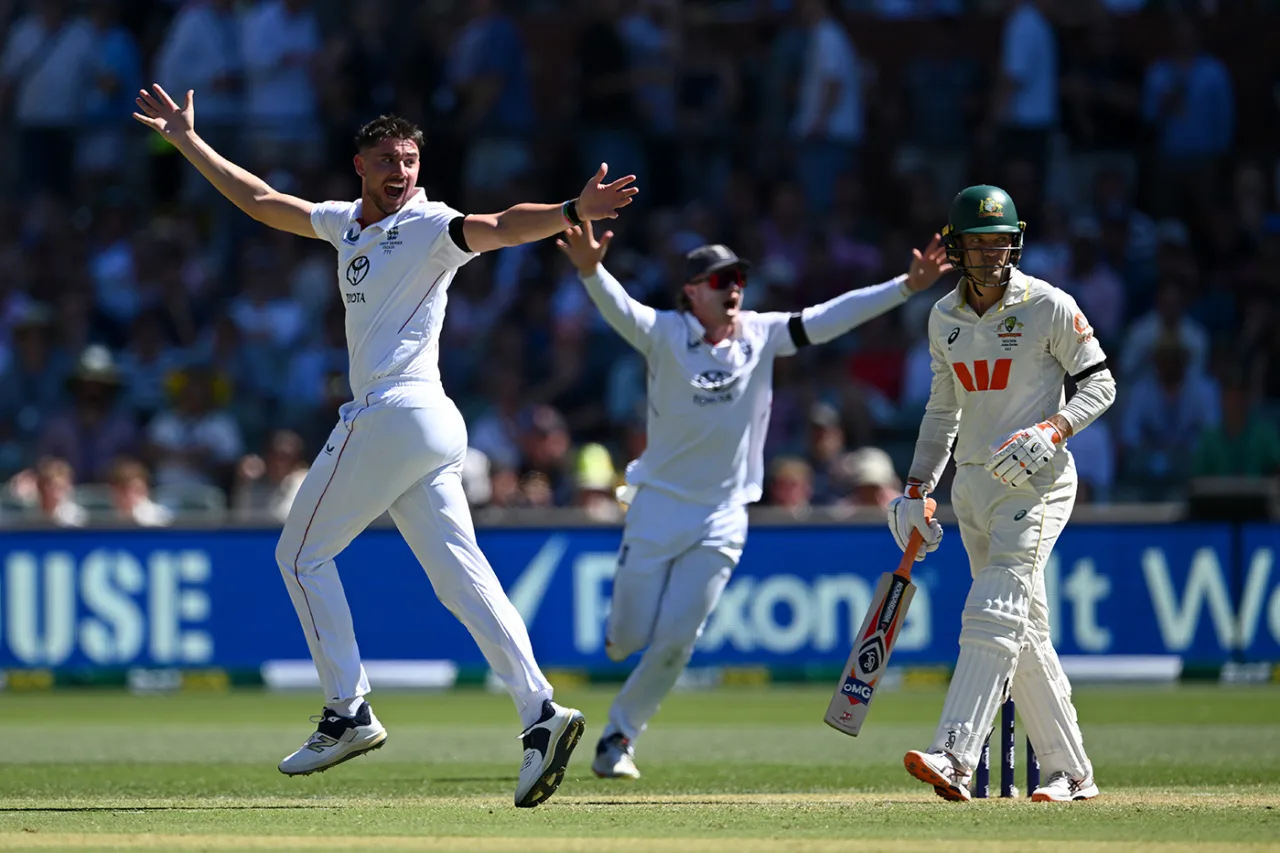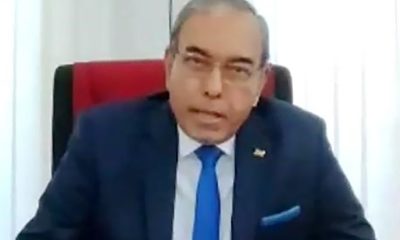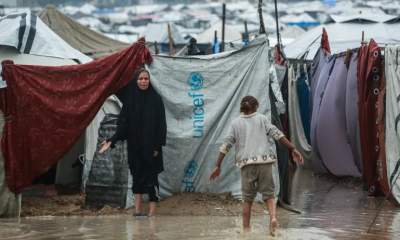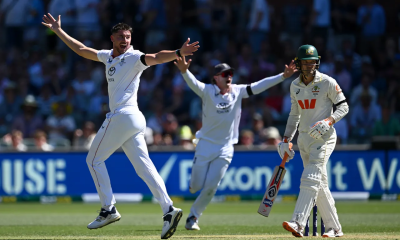Sports
A year after Olympic qualifying debacle, will Nilani face the same predicament?

by Reemus Fernando
Steeplechase runner Nilani Ratnayake put back the disappointment of missing the Tokyo Olympics when she produced a superb world-leading time of 9:47.47 seconds at the first selection trial in February. More than a month after that feat her timing is the eighth fastest in the world for a steeplechaser this year and more importantly she is ranked 33rd in the World Athletics’ ‘Road to Oregon’ World Championship rankings. But with only the upcoming National Championship available to have another go at her own national record mark, will the same predicament that deprived her from taking part in the Olympics befall the Army athlete again?
Not many are aware of NIlani’s current standings in the ‘Road to Oregon’ World Championship rankings’. There is talk within the athletics fraternity to send a wildcard for the Athletics World Championship in Oregon, USA in July. Like the not-so-popular track discipline itself, the long distance runner too remain in the shadows of more flamboyant athletes, though her impressive performance has placed her at the forefront of the race to win qualifying standards for the world event. According to World Athletics some 45 athletes are selected for the women’s steeplechase with 24 being chosen by entry standards and another 21 picked by world rankings positions. Though Nilani remains in contention for World Championship participation on today’s standings, the lack of top grade competitions will hinder her chances of maintaining the current position.
In the lead up to Tokyo Olympics, Nilani was Sri Lanka’s prime prospect in track and field sports as she was within the required rankings to earn a place in the team to Japan. Six months ahead of the Olympics she was ranked 35th in the world and the then World Athletics ‘Road to Olympics rankings’ showed that what was required was just maintaining that position. But lack of quality competitions and a technical faux pass at one of the local competitions meant that she missed the opportunity. On the cutoff date to reach qualifying standards she was ranked just outside the ‘Road to Olympic Rankings’.
Now in a World Championship year, Ratnayake is ranked 33rd in the ‘Road to Oregon rankings’. There will be top competitions accessible to her counterparts from other countries but her.
With the World Championship coinciding with Sri Lanka Athletics Centenary year it is only appropriate that the country’s governing body and the Ministry of Sports do their best to send qualified athletes for the world event rather than taking the easy option of sending a wildcard.
In the men’s category the US based high jumper Ushan Thiwanka has produced some outstanding performances. Despite improving the country’s indoor high jump record, he did not get an opportunity to take part in the World Indoor Championships in Belgrade where he could have earned valuable points to improve on his world ranking and the prospect of qualifying for the World Championships.
The ranking system, introduced by World Athletics a couple of years ago, requires you to compete in top grade competitions to improve your rankings. Despite having a personal best of 2.30 metres (Sri Lanka record) from May 2021 and producing a seasonal best of 2.27metres in February this year Thiwanka is not in the World Athletics’ ‘Road to Oregon’ World Championship rankings so far. His 2.27 metres produced in February is the third best performance in the world in an outdoor competition this year. At the World Indoor Championships only six athletes had jumped higher than Thiwanka’s seasonal best. Yet such a bright prospect like Thivanka will not be eligible to compete at the World Championships.
The athletes like Thivanka and NIlani only need top grade competitions to improve their rankings. Recently when asked about Sri Lanka Athletics’ plans to help top athletes improve on their rankings the athletics chief said that a Grand Prix will be held in June to help them. But with the country’s current economic crisis it is doubtful whether the cash trapped institutions would be able to provide the necessary support to make it a reality.
Sports
FIFA World Cup 2026 winners’ prize money doubles to $50m

The winner of the FIFA World Cup 2026 will receive a record jackpot of $50m, football’s global governing body says.
That figure is up from $42m in 2022 and $38m in 2018. But it is still less than half of what was on offer at the much less hyped FIFA Club World Cup earlier this year.
FIFA said the total prize fund for next year’s World Cup – to be staged in the United States, Canada and Mexico – is $655m, a 50 percent increase on the previous edition in Qatar.
By comparison, the FIFA Club World Cup, which was controversially expanded from seven teams to 32 and shoehorned into the football calendar, had a total prize fund of $1bn. The prize for the winning team was worth up to $125m for a tournament that faced fierce resistance from players and leagues and drew sparse crowds for some matches.
The Club World Cup, also staged in the US, was won by Chelsea.
FIFA has a different distribution model for the two tournaments. The disparity in prize money reflects factors such as clubs overseeing much higher costs through wages than national teams.
Beyond the prize money, further funds are put towards the development of football globally.
FIFA President Gianni Infantino said the World Cup would be “groundbreaking in terms of its financial contribution to the global football community”.
FIFA approved the prize money for every stage of the World Cup at a meeting of its council in Doha.
The runner-up will receive $33m with $29m and $27m going to the third- and fourth-placed teams, respectively. The lowest prize money will be $9m and all 48 participating nations will get $1.5m to cover what FIFA described as “preparation costs”.
FIFA said, in all, $727m would be distributed to the football federations participating.
It is not known how each nation will distribute the money, but at the last World Cup, French sports daily L’Equipe reported France’s players were in line for a bonus of $586,000 by their federation if they won the trophy. France was ultimately beaten by Argentina in the final.
[Aljazeera]
Sports
England have review reinstated after technology failure on Carey appeal

England will have a review reinstated after the supplier of Snicko technology admitted an operator error may have cost them the wicket of Alex Carey on the opening day of the Adelaide Test.
ESPNcricinfo understands that Brendon McCullum and Wayne Bentley, England’s head coach and team manager respectively, held talks with Jeff Crowe, the match referee, after the close of play to air their grievances. The ECB will also encourage the ICC to review their systems to improve their decision-making processes in future.
TV umpire Chris Gaffaney upheld Ahsan Raza’s on-field “not out” decision after Carey, on 72, flashed at a ball from Josh Tongue outside off stump. There was a clear spike shown on the Real-Time Snickometer (RTS) several frames before the ball had passed the bat. “There’s a clear gap, no spike,” Gaffaney said.
But Carey, who went on to score 106, admitted after play that he thought he had hit the ball, saying he had “a bit of luck” and was “clearly not” a walker. BBG Sports, the supplier of RTS, later suggested that an operator had “selected the incorrect stump mic for audio processing” and took “full responsibility for the error”.
David Saker, England’s bowling coach, said on Wednesday night that the dressing room has harboured concerns about the reliability of RTS all series. “We shouldn’t be talking about this after a day’s play, it should just be better than that,” Saker said. “In this day and age, you’d think the technology is good enough to pick things up like that.”
The ICC’s playing conditions allow player reviews to be reinstated at the match referee’s discretion if a player review “could not properly be concluded due to a failure of the technology”. There is precedent for the decision from England’s tour to India in early 2021, when Ajinkya Rahane was incorrectly given not out in the second Test in Chennai.
Crowe’s decision means that England will have two reviews available to them on the second day in Adelaide, with Australia set to resume their innings of 326 for 8. It may be scant consolation to them given Carey was able to bat on and score a further 34 runs after being incorrectly given not out.
The ICC has two approved “sound-based edge detection technology” suppliers: RTS, which is used in Australia, and UltraEdge, which is used in the rest of the world. Ricky Ponting, the former Australia captain, said on Thursday morning that umpires “can’t trust” RTS and suggested that UltraEdge is superior.
“This technology that we are using here is simply not as good as technology that’s used in other countries,” Ponting said while commentating on Channel 7. “You talk to the umpires, they’ll tell you the same thing. They can’t trust it.
“They’ve got a third umpire sitting up in there that’s got to make decisions based on what he’s seeing that the technology is providing, and sometimes they have a gut feel that it’s not right. “That can’t happen. You’ve got to be able to trust the technology that’s in place.”
The ICC did not respond to a request for comment.
[Cricinfo]
Sports
Fourth T20I abandoned due to foggy conditions in Lucknow

No play was possible in the fourth T20I between India and South Africa because of poor visibility in foggy Lucknow. Leading the series 2-1, India are now assured of taking their unbeaten streak in T20I series to 15. The decider of the series is scheduled to be played in Ahmedabad on Friday.
While the AQI in Lucknow hovered around the early-to-mid 400s, which is hazardous, the concern for the umpires remained visibility. During their inspections, one of the umpires would go to a square boundary to see if he could spot the white ball held up by the side of the pitch. Six inspections took place before play was finally called off at 9.26pm.
Cricket in north Indian winters has long been a contentious issue, and not just for visibility. The BCCI had scheduled a Test for South Africa in Delhi before better sense prevailed and Delhi was given a Test before Diwali, which is when the air quality in north India starts to fall to poor and dangerous levels.
South Africa’s tour comes to an end on Friday in Ahmedabad. In what has been a hugely successful tour, they blanked India 2-0 in the Tests and forced a decider in the ODI series, which India won 2-1. India have registered two comprehensive wins in what remains their strongest format to go 2-1 up in the T20Is, but they didn’t get a chance to seal the series before the finale because of the bad light in Lucknow.
Jasprit Bumrah, who missed the last match for personal reasons, was with the team in Lucknow, which should be a boost for India ahead of the last match, which will be played in Bumrah’s hometown.
[Cricinfo]
-

 Business7 days ago
Business7 days agoCabinet approves establishment of two 50 MW wind power stations in Mullikulum, Mannar region
-

 Features4 days ago
Features4 days agoWhy Sri Lanka Still Has No Doppler Radar – and Who Should Be Held Accountable
-

 Features6 days ago
Features6 days agoDitwah: A Country Tested, A People United
-

 News6 days ago
News6 days agoRs 1. 3 bn yahapalana building deal under investigation
-

 News7 days ago
News7 days agoCabinet approves the transfer of the constructions and land reserved for the Kiinniya University to the Ministry of Foreign Affairs, Foreign Employment, and Tourism
-

 News6 days ago
News6 days agoFormer SAARC SG Esala Weerakoon calls for ‘South Asian Climate Compact’
-

 Business6 days ago
Business6 days agoFluctuating fortunes for bourse in the wake of selling pressure
-

 Opinion6 days ago
Opinion6 days agoComfort for some, death for others: The reality of climate change



















